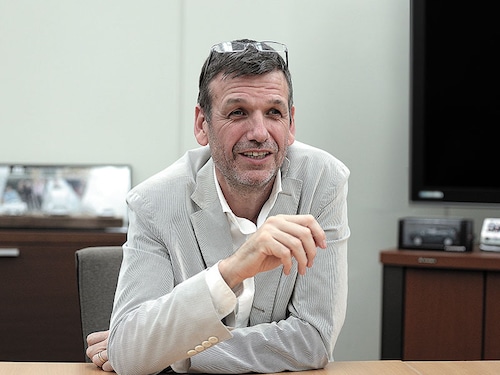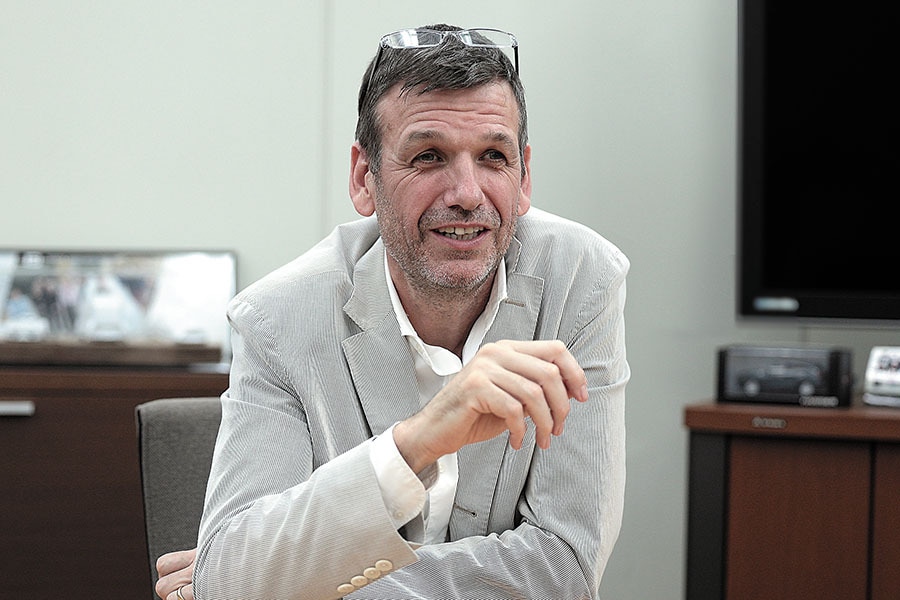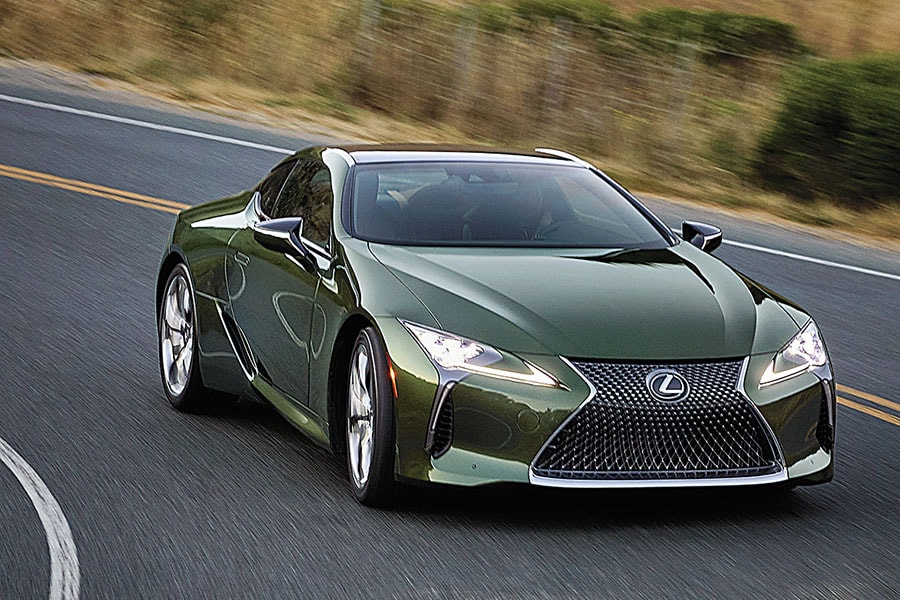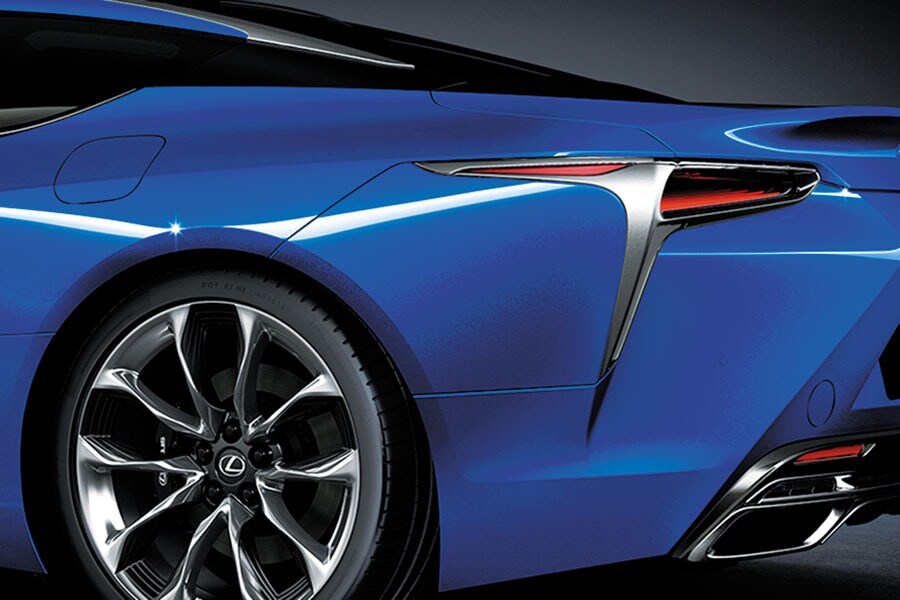'Electric powertrains will change how we use mobility'
Simon Humphries of Lexus talks about the brand's design philosophy, and the impact of electric vehicles


 Head of Toyota & Lexus Global Design, Simon Humphries
Head of Toyota & Lexus Global Design, Simon Humphries
Lexus, the luxury arm of Japanese car manufacturer Toyota, launched its first model Lexus LS in 1989, with the aim of making a premium sedan. Since then, the brand has added coupes, convertibles and SUVs to its lineup, along with hybrid models such as a version of the RX crossover. Through this evolution, the brand has established a strong design philosophy, whether it is the exterior aerodynamics of the vehicle or its interior ergonomics.
As head of Toyota & Lexus Global Design, Simon Humphries seeks to define Lexus’s unique values in the form of a brand philosophy, incorporating cultural references to its Japanese heritage, and building a design direction that is relevant to users around the world. He began his career in design in 1988 when he was awarded the Royal Society of Arts Bursary Prize for Product Design in the UK. This gave him the opportunity to work for Sony, and ignited his passion for living and working in Japan.
Having joined Lexus in 1994, and having worked in many roles, Humphries tells Forbes India about the various aspects of the brand’s approach to design, the evolving luxury vehicle customer, and the impact of electric powertrains on the future of automobile design. Edited excerpts:
Q What are the quintessential elements of Lexus design?
As with many automotive manufacturers, Lexus design utilises “brand cue” elements such as the Spindle Grille, which is shared throughout the lineup to define the consistency and identity of the brand. However, I believe the quintessential element of Lexus design is the philosophy driving the design direction itself.
Lexus is a young brand in comparison to its competitors, and seeks to challenge and redefine the prestige automotive experience in a way that is not only provocative, but also sophisticated and relevant not only to the customer but also society as a whole. From this point of view, we strive to challenge accepted norms in prestige car design, such that all the vehicles in the lineup have to share an almost identical design language. In Lexus, the design direction is tailored to fit, and enhance, the individual concept of each vehicle, to maximise the value experience to the customer, yet at the same time hold a clear, underlying consistency of taste that runs through all vehicles.
In real terms, the design language of Lexus utilises high levels of “contrast” in the architecture and surface design. The form appears to change depending on angle, distance, light etc, creating an impression that evolves over time. This sensibility is closely linked to Japanese aesthetic values, namely, that something can be striking and simple, yet still have intriguing depth and artistry.
Q Lexus started with sedans such as the LS 400 and ES 250, and then moved on to models such as convertibles, coupes and SUVs. How is the design philosophy of the brand maintained through these different car models?
The quest to redefine and broaden the prestige sector allowed the brand to innovate and conceive cars such as the LS400, or the original RX, the pioneer crossover SUV that literally defined what has now become a global trend. Although these cars are different in many ways, design consistency can be managed by placing the emphasis on the “consistency of approach”, rather than mimicking the same forms from car to car.
The actual shape may vary from vehicle to vehicle, but, hopefully, in every vehicle you feel “contrast” in the surfaces that creates a visual experience that changes over time you feel that the car is “provocative yet elegant”, you feel the design “anticipates” your needs as you interact with it. These core values are intended not to change with time and fashion, but rather be consistent and adaptable to different types of vehicles now and in the future.
Q How has changing automobile technology and materials influenced Lexus’s design over the years? Give some examples.
Great design cannot be achieved by the power of the designer alone. The engineering, materials, regulations, sales etc all influence the ability to innovate design. One of the simplest examples is the press and material technology behind the steel body shell. The ability to create incredibly precise and small press radii, or deep drafts, without the steel splitting or creasing, has led to more emotional and intriguing body design. Materials technology in paint, such as Lexus’s Structural Blue, draw on lessons from nature to create a high luminance blue that would have otherwise been impossible with traditional pigment technology. Innovations and better understanding of aerodynamic needs have not only led to better fuel economy figures, but have also created freedom for the designer, and avoided cars becoming too similar.
 The LC sports car is an answer to how to create a beautiful yet contemporary vehicle that challenges the need to rely on traditional design directions
The LC sports car is an answer to how to create a beautiful yet contemporary vehicle that challenges the need to rely on traditional design directions
Q What are the most important factors that decide how the interior of the car is designed for high-quality comfort?
The first is to recognise that “comfort” is in itself a subjective matter. Therefore, the most important factor to achieving “comfort” is to anticipate the needs and expectations of the customer as closely as possible. In a sports vehicle such as the LFA, the critical factor is to create an environment that feels protective and secure while having little or no distractions from the central task of driving at speed. In physical terms, this may mean the instrument panel is straight and horizontal to provide a sense of stability when cornering, or that reflective surfaces are kept to a minimum to avoid glare distraction. The controls are designed to be centred around the driver, forming a focussed cockpit environment that anticipates the situation caused under high G forces. The needs of an LS or LM customer are very different. Comfort is not only about the physical design of the seat, or the tactile and visual value of the materials used on the instrument panel, but also about the total holistic experience from before the door opens, all the way to the destination point.
Q Which are the most iconic models that Lexus has made, and what makes them iconic?
The original LS400 triggered a fundamental shift in the premium automotive segment by placing value on innovation rather than history. It fundamentally changed the entire ownership experience from the dealer through to everyday driving. From a design point of view, aerodynamics, quality, durability and reliability became an integral part of the visual value. Even the smallest details such as the movement of the ashtray door when it opened were designed as part of the entire experience.
The RX questioned whether only the sedan could be considered a prestige vehicle. It redefined the perception of luxury as something that could be considered in both “on” and “off” situations.
The NX brought provocative emotion to the SUV segment, challenging the rationality of the segment. The style, although in its fifth year, still looks avant-garde and fresh.
The LC offers an answer to how to create a beautiful vehicle that challenges the need to rely on traditional design directions. Quite simply, it is one of the very few sports cars that could be described as both contemporary, yet at the same time beautiful.
Q What do luxury car customers expect from the design of the vehicles they want to buy? How has this customer evolved over the years?
The luxury car owner has fundamentally changed. Earlier, many primary purchase reasons were based on social hierarchy stereotypes, it is now a much more personal decision. Brands themselves have evolved to meet these expectations with more diversity and clarity of what they stand for, giving the luxury customer a greater opportunity to utilise the product for self-expression.
 Lexus’s Structural Blue draws on lessons from nature to create a high luminance that would have been impossible with traditional pigment technology
Lexus’s Structural Blue draws on lessons from nature to create a high luminance that would have been impossible with traditional pigment technology
Q How do you think the move towards electric powertrains will influence the design of cars in the future?
It’s often said the electric powertrain will fundamentally change the layout and usability of future vehicles, and in many cases this is true. But the reality is that the combination of powertrain layout innovation, together with connected technologies, autonomous support, as well as new materials technology, all taking huge simultaneous paradigm shifts in terms of innovation, will truly create change not only in vehicle design and engineering, but also in the fundamental way we use mobility in society.
Most of the products we buy and use today are static throughout their lifecycle. The car you buy today will be exactly the same when you sell it five years later. The influence of technology advances will fundamentally change this equation. The product will “grow” with the user, and change and improve as it moves through its product lifecycle. Products, which up till now have been fundamentally isolated, will be designed as part of an optimised system. The connectivity and synergy between them will form a new user experience tailored to the expectations of that person.
First Published: Dec 16, 2020, 16:47
Subscribe Now